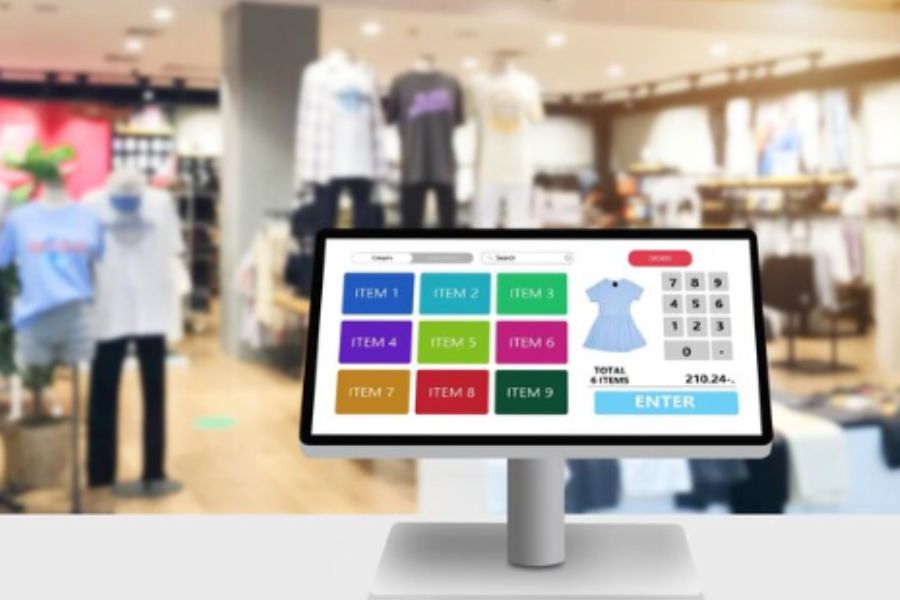As the retail electronic landscape prepares for the peak seasons of 2024, businesses face both exciting opportunities and significant challenges. The blend of cutting-edge technology and retail demands meticulous planning and strategic execution. This article provides essential tips and insights to help you thrive in the dynamic retail electronic market during this crucial period. Ready to enhance your operations and meet customer expectations with confidence? Let’s go!
What Is Peak Season In Retail Electronic?
The global consumer electronics e-commerce industry was valued at $244 billion in 2023 (Statista). By 2029, the market size is forecasted to exceed $397 billion. The industry’s average annual growth rate from 2025 to 2028 is predicted to be 3%.
Peak season in the retail electronic industry refers to periods when consumer demand for electronic products and gadgets reaches its highest point. This surge is often driven by holidays, special occasions, product launches, and promotional events. During peak season, retailers experience a significant increase in sales and foot traffic, impacting their revenue and profitability.
Key characteristics of the peak season in the retail electronic sector:
- Holidays and Festive Periods: Major holidays like Christmas, Hanukkah, Diwali, Thanksgiving, and New Year’s boost consumer inclination to purchase electronics as gifts or for personal use.
- Gift-Giving Season: Electronics are popular gifts for birthdays, graduations, weddings, and other occasions, leading to higher sales during these times.
- Product Launches: Electronic companies often time new product releases to coincide with peak season, generating excitement and anticipation among consumers.
- Promotions and Discounts: Retail electronic businesses offer special promotions, discounts, and bundle deals during peak season to attract more customers and encourage higher spending.
- Online Shopping Events: Black Friday and Cyber Monday drive substantial increases in online sales with significant discounts on various products, including electronics. In 2021, the average consumer expenditure during this period was $301.27.
- Consumer Electronics Shows: Events like CES (Consumer Electronics Show) increase consumer interest in electronics, leading to higher demand for newly showcased products.
How Do Retail Electronic Businesses Prepare For Peak Season?
According to a survey by the National Retail Federation, American consumers spent $935 billion during the peak retail season of 2022. This period of heightened retail activity can significantly impact your business, highlighting the importance of effective preparation.
Key Preparation Strategies:
- Predict Demand and Stock Inventory: Anticipate which products will be in high demand and ensure sufficient stock levels to meet customer needs. A POS system (like ConnectPOS) can be used to analyze past sales data and current market trends for insights.
- Create a Comprehensive Sales and Marketing Plan: Develop promotional strategies, including special deals, discounts, and advertising campaigns. Prepare marketing materials well in advance to ensure timely execution.
- Improve Website Performance: Conduct thorough testing to handle increased traffic. Improve loading times and build a robust infrastructure to prevent site crashes.
- Equip and Train Staff: Prepare your team to handle the surge in customer inquiries and orders. Offer training on customer service best practices and efficient logistics handling.
- Bolster Customer Support: Elevate customer service channels to handle increased queries. Consider extending support hours and adding more contact options to accommodate the influx.
- Plan for Returns and Exchanges: Expect an increase in returns and exchanges post-peak season. Develop a clear, customer-friendly policy to manage this process smoothly.
- Collaborate with Suppliers: Maintain strong communication with suppliers to ensure timely stock deliveries. Discuss contingency plans for potential supply chain disruptions.
Best Retail Electronic Practices for Peak Season
Plan Ahead and Prepare Thoroughly for Peak Season
Preparing for the peak season in retail electronic demands meticulous planning and comprehensive execution, including considerations for your Point of Sale (POS) system.
- Calendar Mapping and Key Date Identification: Create a comprehensive calendar that highlights pivotal dates of the peak season. Align these dates across the diverse markets you serve, accounting for any market-specific variations.
- Detailed Timeline Design: Construct a detailed timeline covering all essential preparatory tasks leading up to the peak season. Allocate sufficient time for each task and factor in contingency periods to address unforeseen challenges.
- Align with Marketing Channels: Work closely with your marketing teams to synchronize strategies and campaigns. Coordinated efforts across various channels amplify the impact of your promotions and communications.
- Diversification for Resilience: While emphasizing key moments, incorporate additional promotions or product launches. This approach spreads risk and ensures a more resilient strategy.
- Insights from Previous Seasons: Use insights from previous peak seasons to guide your current strategy. Analyze historical performance to set attainable targets and establish necessary margins.
- Legal Compliance and Documentation: Review the legal landscape concerning commercial activities. Update terms, conditions, and policies as needed, and maintain clear documentation of your communication strategies to ensure compliance.
- POS Preparation: Optimize your POS system, like ConnectPOS, to handle the surge by improving inventory management, integrating promotions, streamlining transaction processing, and enhancing the customer experience through an intuitive interface.
Address Critical Tech Issues and Enforce a Code Freeze
Implementing a code freeze during the peak season ensures stability and reliability in your products and systems during the highest usage and demand. Manage this effectively with the following steps:
- Identify Critical Tech Issues: Collaborate with development and QA teams to identify existing and potential tech issues impacting user experience, performance, security, and functionality. Categorize these issues based on severity.
- Prioritize and Plan: Prioritize tech issues based on impact and severity. Create a plan to address these issues before the peak season, allocating resources and setting deadlines.
- Set Up a Code Freeze: Define a timeframe for the code freeze during the peak season. Communicate these dates to all relevant teams, stakeholders, and partners well in advance.
- Focus on Stability: During the code freeze, shift focus towards stability, bug fixes, and optimization rather than new features. Conduct rigorous testing, including load and stress testing, to ensure your systems can handle increased traffic.
- Establish Emergency Protocols: Define clear protocols for urgent fixes during the code freeze. These updates should follow a streamlined approval process and undergo thorough testing before deployment.
Test and Schedule Content and Promotions
A well-coordinated strategy ensures that the right message reaches the right audience at the right time, driving both online and in-store traffic. Execute this effectively with the following steps:
- Market Analysis and Research: Conduct comprehensive market analysis to understand current industry trends, consumer preferences, and the competitive landscape. Use insights from sales data, customer feedback, and emerging technologies to guide your strategy.
- Content Creation: Develop engaging and high-quality content that resonates with your target audience. This includes product videos, blog posts, social media updates, and infographics, highlighting the unique selling points of your products.
- Promotion Strategy: Craft a promotional strategy balancing discounts, bundles, and value-added offers. Decide which products will be the primary focus and determine discount levels or incentives. Consider gamification techniques like contests to enhance engagement.
- A/B Testing: Conduct A/B testing to determine the most effective strategies. Test different variations of content, promotional offers, and delivery methods to identify what resonates best with your audience.
- Social Media Planning: Create a social media content calendar outlining when and what you’ll post leading up to and during the peak season. Use a mix of product images, customer testimonials, and interactive posts to keep your audience engaged.
- Paid Advertising: Allocate a budget for paid advertising on platforms like Google Ads and social media. Target specific demographics and use relevant keywords. Monitor ad performance and adjust to optimize ROI.
- Website and Landing Page Optimization: Ensure your website is optimized to handle increased traffic. Create dedicated landing pages for your promotions, making it easy for visitors to find information and make purchases. Implement clear calls to action and streamline the checkout process.
Evaluate Monitoring Systems and Refine Reporting Procedures
Optimizing retail operations through centralized data and reporting can revolutionize performance during peak seasons.
- Centralized Data and Reporting: Integrate data from various touchpoints, such as POS terminals, online orders, and inventory management systems. This provides comprehensive insights into customer behavior, product popularity, and inventory levels.
- Demand Forecasting and Inventory Management: Use centralized data to forecast demand and manage inventory levels. Analyzing historical sales data and customer preferences helps anticipate which products will be in high demand.
- Customer Experience and Staff Engagement: Collate data from various sources to gain a 360-degree view of each customer’s preferences and interactions. This information empowers personalized recommendations and promotions. Use reporting to gauge staff performance and allocate personnel based on real-time foot traffic.
Understand and Overcome Limitations Effectively
Address key limitations faced during the peak season for retail electronic and strategies to overcome them.
- High Demand and Inventory Management: Implement forecasting models that incorporate historical data, market trends, and customer preferences. Real-time inventory tracking and agile supply chain management help meet demand.
- Scalability of Resources: Hire seasonal staff, provide additional training, and use AI-powered chatbots to manage customer queries. Optimize e-commerce platforms for high traffic.
- Quality Control and Returns: Maintain strict quality control measures. Provide clear return policies, hassle-free returns, and efficient customer support to maintain customer loyalty.
- Pricing and Promotions: Use dynamic pricing strategies to balance competitive pricing with profit margins. Implement bundled offers, loyalty programs, and limited-time deals to drive sales without compromising profitability.
- Technological Infrastructure: Invest in robust IT systems, reliable servers, and secure payment gateways. Regular stress testing and performance optimization ensure digital platforms handle increased load.
Verify Contact Lists and Standard Operating Procedures (SOPs)
Retail electronic operations are a dynamic collaboration involving a multitude of stakeholders, both internal and external, working together to ensure a fluid journey from inception to conclusion. It is paramount that all teams and entities remain synchronized and poised to address any challenges that may arise at any point along the continuum.
- Clear Communication Channels: Maintain a comprehensive contact list of all stakeholders, including accurate phone numbers and email addresses.
- Diligent SOP Review: Regularly review and update SOPs to align with current operations. Identify and rectify inaccuracies promptly.
- Facilitating Open Communication: Establish a dedicated platform, often referred to as a “War Room,” for real-time communication. Share insights, address concerns, and strategize collectively.
Utilize Data Analytics for Informed Decision-Making
Data analytics plays a crucial role in optimizing retail operations during the peak season. Retail electronic businesses can benefit from the following practices:
- Analyze Past Sales Data: Review historical sales data to identify trends and patterns on your POS system. This helps in forecasting demand and planning inventory accordingly.
- Real-Time Data Monitoring: Implement systems like ConnectPOS to monitor sales and customer behavior in real-time. Adjust strategies based on live data to maximize sales opportunities.
- Customer Insights: Use analytics to understand customer preferences and purchasing habits. Tailor promotions and product offerings to meet customer needs effectively.
Elevate Mobile Shopping Experience
With more consumers shopping on mobile devices, enhancing the mobile shopping experience is important for retail electronic businesses:
- Mobile Optimization: Ensure your mobile site and app are fast, user-friendly, and easy to navigate. A seamless experience encourages more purchases.
- Streamlined Checkout Process: Simplify the checkout process on mobile devices. Minimize the number of steps required to complete a purchase to reduce cart abandonment.
- Mobile-Specific Promotions: Create promotions specifically for mobile users. Incentives like mobile-only discounts can drive more traffic to your mobile platforms.
Implement Sustainable Practices
Sustainability is increasingly important to consumers. Retail electronic businesses can attract eco-conscious customers by implementing these tips:
- Promote Eco-Friendly Products: Highlight products made from sustainable materials or those with energy-saving features.
- Sustainable Packaging: Use eco-friendly packaging materials and promote recycling programs.
- Highlight Sustainability Efforts: Communicate your company’s sustainability initiatives in marketing campaigns. Transparency in environmental efforts builds customer trust and loyalty.

Foster Customer Loyalty with Exclusive Deals and Rewards Programs
Building customer loyalty is vital for long-term success. Retail electronic businesses can achieve this through:
- Exclusive Deals: Offer special discounts and promotions to loyal customers. Exclusive deals make customers feel valued and encourage repeat purchases.
- Rewards Programs: Implement loyalty programs that reward customers for repeat purchases. Points systems, tiered rewards, and special offers for members can drive engagement.
- Personalized Offers: Use customer data to create personalized promotions and recommendations. Tailored offers based on purchase history enhance customer satisfaction.
ConnectPOS is a dynamic point-of-sale system that can be tailored for multiple industries and markets, including retail electronic. It integrates effortlessly with various e-commerce platforms like Magento, Shopify, and WooCommerce, enhancing inventory tracking and simplifying transaction processing. With real-time data insights, ConnectPOS helps businesses manage operations effectively, elevate customer experiences, and make informed decisions. Its robust features include customizable interface options, multi-store management, and flexible payment methods, ensuring success during peak seasons and beyond.
Conclusion
The peak season of 2024 offers tremendous opportunities for retail electronic businesses. With a comprehensive and well-informed strategy, retailers can thrive. Utilizing advanced technologies for real-time insights, refining reporting procedures, and maintaining end-to-end visibility, businesses can effectively meet the demands of a fast-paced market. By preparing thoroughly and adapting to emerging trends, retail electronic stores can maximize their success and deliver exceptional customer experiences.
For those looking to elevate their retail electronic operations, contact ConnectPOS today to learn how our solutions can drive your success.



